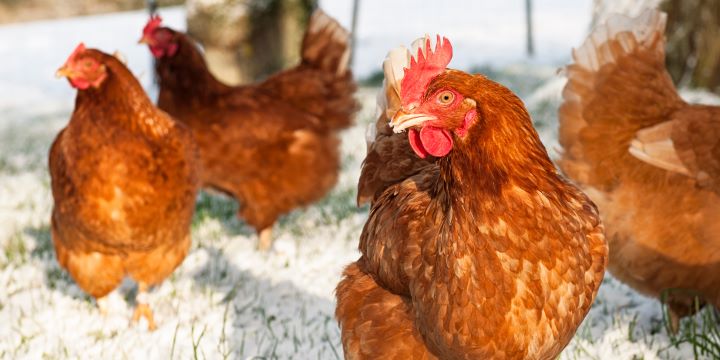Keeping chickens warm during the winter is crucial for their health, egg production, and overall well-being. As temperatures drop, these resilient birds require additional care to ensure they remain comfortable and safe. This comprehensive guide explores effective strategies for winterizing your coop, providing supplemental heat, and maintaining optimal conditions for your feathered friends.
Understanding Chicken Cold Tolerance
Chickens are surprisingly hardy animals with a natural ability to withstand colder climates. Their feathers provide significant insulation, and they instinctively huddle together for warmth. However, extreme cold, drafts, and damp conditions can lead to health issues, including frostbite and respiratory problems. Recognizing the signs of distress in your chickens, such as lethargy, refusal to eat, or huddling, is essential for timely intervention.
Winterizing the Chicken Coop
Creating a secure and insulated environment is your first line of defense against the cold. Start by inspecting your coop for cracks, holes, and gaps. Sealing these not only keeps out drafts but also deters predators. While ventilation is critical to prevent moisture buildup and ensure a fresh air supply, it should be strategically placed away from roosting areas to avoid direct drafts on the birds.
Adding insulation to the coop walls can further enhance warmth retention. Materials like foam boards or fiberglass insulation, covered with plywood to prevent pecking, are effective options. Remember, the goal is to keep the coop warm, not airtight, as proper airflow is vital to prevent ammonia and moisture accumulation.
Bedding for Warmth
Deep litter method is an excellent strategy for winter bedding. This involves layering organic material, such as wood shavings or straw, on the coop floor and allowing it to build up over time. As the chickens scratch and the material decomposes, it generates heat, adding an extra warmth source. Regular monitoring is necessary to ensure the litter remains dry and free from mold.
Supplemental Heat Sources
While chickens can tolerate cold, providing a supplemental heat source during extreme conditions can help. Caution is paramount, as many traditional heat lamps pose fire risks. Consider safer alternatives like radiant heat panels or flat panel heaters, which offer warmth without the danger of open bulbs. Always ensure any electrical installations are secure, waterproof, and out of reach of your chickens.
Diet and Water
Nutrition plays a pivotal role in keeping chickens warm. A diet slightly higher in fat and protein during winter months can help maintain body heat and energy levels. Adding grains like corn to their evening feed can also aid in overnight warmth, as digesting grains generates body heat.
Water is equally important, and preventing it from freezing is a challenge in cold weather. Heated water dishes or water heater bases can ensure a constant supply of fresh, unfrozen water, encouraging regular intake to prevent dehydration.
Acclimatizing Your Flock
Gradually exposing your chickens to cooler temperatures in the fall can help them acclimatize and develop thicker feathers. Sudden changes in temperature can be stressful, so it’s beneficial to allow them a natural adjustment period.
Monitoring Health and Behavior
Regular health checks are vital during the winter. Pay attention to your chickens’ combs and wattles, as these are common sites for frostbite. Applying a thin layer of petroleum jelly can offer some protection against frostbite on particularly cold nights.
Behavioral observations are also crucial. Chickens huddled together or reluctant to leave the coop may indicate the environment is too cold, signaling the need for additional warmth or insulation.
Outdoor Access
Providing a sheltered outdoor area can encourage chickens to venture outside, ensuring they get necessary exercise and sunlight, even in winter. Clearing snow from paths and offering a covered area outside the coop can make the outdoor space more appealing and accessible.
Conclusion
Keeping chickens warm in winter requires a multifaceted approach, combining coop insulation, appropriate bedding, supplemental heat, and careful dietary adjustments. By understanding the natural behaviors and needs of your chickens, you can create a comfortable and safe environment that supports their health and productivity throughout the colder months. Regular monitoring and adjustments ensure that your flock not only survives but thrives during winter, laying the foundation for a robust and resilient backyard farm.
Implementing these strategies will not only safeguard your chickens against the cold but also contribute to a more sustainable and self-sufficient homestead. With the right preparations, you can enjoy the rewards of backyard poultry keeping, even in the depths of winter.


